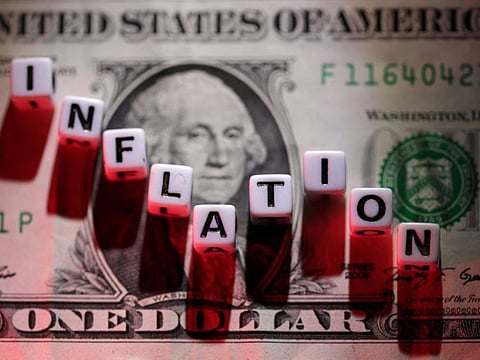Dollar hovers near 15-month low as easing inflation spurs rate peak bets
Markets are still pricing in a 95% chance of a 25bps hike from the Fed later this month

London: The dollar hovered near a 15-month low on Friday and was set for its biggest weekly decline since November after softening US inflation data fuelled investors bets that the Federal Reserve was close to the end of its rate hike cycle.
US producer prices barely rose in June and the annual increase in producer inflation was the smallest in nearly three years, data showed on Thursday, a day after data showed consumer prices rose modestly last month.
“Markets are generally pretty pleasant with the lower inflation data, because lower inflation together with the still resilient labour market supports the narrative of a soft landing in the US economy,” said Carol Kong, currency strategist at Commonwealth Bank Of Australia in Sydney.
“But we still maintain our view that the US will enter a recession later this year because of the impact of past and potentially future interest rate hikes.” The dollar index, which measures the US currency against six peers, edged 0.03 per cent higher at 99.803, after touching a 15-month low of 99.574 earlier. The index is down 2.4 per cent for the week, its biggest weekly decline in eight months.
Markets are still pricing in a 95 per cent chance of a 25 basis point hike from the Fed later this month, CME FedWatch tool showed, but no more for the rest of the year.
Investors have been betting on a turn in the dollar for months, with short positions more than doubling over the month to July 7, according to data from Commodity Futures Trading Commission, although they remain far off the levels in 2021.
Against a weakening dollar, the euro touched a fresh 16-month peak of $1.1243 in Asian hours before flattening at $1.1225.
“(The euro) has taken off on the back of US disinflationary bets and a large unwinding of dollar positions. Our short-term fair value model shows that the pair (euro/dollar) has now entered overvaluation territory,” said Francesco Pesole, FX strategist at ING.
The Swedish crown fell 0.3 per cent against the dollar to 10.2320, moving away from a two-month high hit versus the greenback on Thursday, on data showing Sweden inflation was decelerating at a slower pace than expected. The Swedish currency is still set for its biggest weekly gain since March 2009, up 5.4 per cent.
Consumer prices in Sweden, measured with a fixed interest rate, rose 0.9 per cent in June from the previous month and were up 6.4 per cent from the same month last year. A Reuters poll had predicted a inflation at 6.1 per cent.
Elsewhere, the Australian dollar was flat after Michele Bullock was appointed head of Australia’s central bank on Friday, becoming its first female governor as it undertakes a sweeping reorganisation.
The Japanese yen strengthened 0.29 per cent to 137.65 per dollar and is on course for its best week against the dollar since January.
Sign up for the Daily Briefing
Get the latest news and updates straight to your inbox



